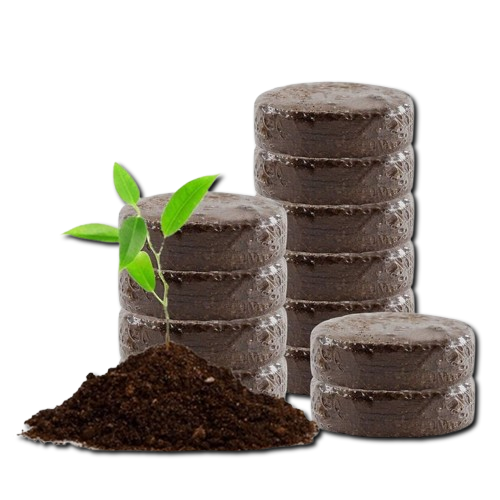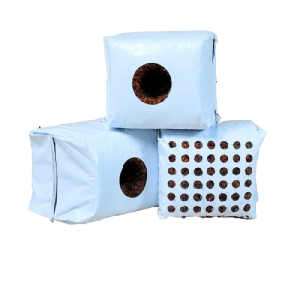Mixes for Grow Bags: Volcanic Ash and Cocopeat
Pacificcoir having researched several studies and expert recommendations and offers some guidance on effective ratios and mixing strategies for our substrates.
01. Cocopeat and Volcanic Tuff Mixtures for Roses
A recent study on soilless cultivation of roses evaluated the performance of cocopeat, volcanic ash, and their mixtures. The study used the following mixes:
- Pure Cocopeat
- Pure Volcanic Ash (particle sizes: 2–4 mm, 0–4 mm, 0–8 mm)
- Cocopeat–Ash Mixture (exact ratio not specified, but typically 1:1 by volume is used in such research)
- Cocopeat promotes rapid initial growth due to high water-holding capacity.
- Volcanic tuff (especially 0–8 mm particle size at 20 cm depth) provides better long-term flower quality and plant health.
- Mixtures of cocopeat and tuff balanced water retention and mineral enrichment, making them suitable for grow bags targeting both early vigor and sustained productivity.


02. General Potting Mixes with Ash Additives
- 50% Cocopeat
- 20% Vermicompost (or organic manure)
- 10% Neem cake powder (organic insecticide)
- 5% Ash (can be wood ash or volcanic ash)
- 5% Lime (optional, for calcium)
- 10% Other amendments (e.g., perlite, sand, or additional compost)
Ash is included at about 5% by volume, contributing potassium and helping keep the mix loose For seed germination, a 1:1 ratio of cocopeat to volcanic ash is practical.
Table: Practical Mix Ratios
| Mix Component | Typical Ratio (by volume) | Purpose/Benefit |
|---|---|---|
| Cocopeat | 50% – 70% | Water retention, base substrate |
| Volcanic Ash | 5% – 50% | Minerals, drainage, aeration |
| Vermicompost/Compost | 20% | Nutrients, microbial activity |
| Neem Cake | 10% | Pest resistance |
| Lime | 5% | Calcium, pH adjustment |
| Perlite (optional) | Up to 50% (for seed mix) | Aeration, drainage (can substitute ash) |
Mixing Tips
For grow bags, a 1:1 ratio of cocopeat to volcanic ash is a good starting point, especially for crops needing both moisture and mineral support.
For general potting and vegetable mixes, 50% cocopeat with 5–10% volcanic ash (rest compost and amendments) ensures a balance of water retention and mineral supply2.
Always moisten cocopeat before mixing to ensure even distribution of water and nutrients
Adjust the volcanic ash proportion based on the crop’s drainage and nutrient needs, and
monitor pH as volcanic ash can be mildly acidic to neutral.

Observations

50% cocopeat

30–50% volcanic ash (0–8 mm particle size)

